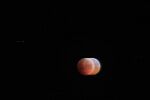Diplopia: Difference between revisions
Nehal Khater (talk | contribs) No edit summary |
Nehal Khater (talk | contribs) (Adding video) |
||
| Line 3: | Line 3: | ||
== Definition == | == Definition == | ||
[[File:Double vision.jpg|thumb|Double vision|alt=|150x150px]]Diplopia means seeing double, is a symptom with both ophthalmological and neurological causes.<ref>Danchaivijitr C, Kennard C. [https://jnnp.bmj.com/content/75/suppl_4/iv24 Diplopia and eye movement disorders]. Journal of Neurology, Neurosurgery & Psychiatry. 2004 Dec 1;75(suppl 4):iv24-31.</ref> | [[File:Double vision.jpg|thumb|Double vision|alt=|150x150px]]Diplopia means seeing double, is a symptom with both ophthalmological and neurological causes.<ref name=":0">Danchaivijitr C, Kennard C. [https://jnnp.bmj.com/content/75/suppl_4/iv24 Diplopia and eye movement disorders]. Journal of Neurology, Neurosurgery & Psychiatry. 2004 Dec 1;75(suppl 4):iv24-31.</ref> | ||
The images may present themselves side by side, on top of one another, or both. | |||
This disorder can impact a person's balance, movement, and ability to read. | |||
== Types and presentation == | |||
'''Monocular'''. | |||
If only one eye is impacted by diplopia, it is called monocular double vision (diplopia). When the patient covers the unaffected eye, diplopia persists, and when covers the affected eye, diplopia disappears.<ref name=":0" /> | |||
'''Binocular'''. | |||
If both eyes are impacted by diplopia, it is called binocular double vision (diplopia). Binocular diplopia occurs when someone with misaligned eyes sees an object, then it falls over the fovea in 1 eye and an extrafoveal location in the other eye. Normally, when someone sees an object, the image falls over the fovea of each eye, and a single image is recognized. The patient has visual blurring that clears up by covering either eye.<ref>Rucker JC, Tomsak RL. [https://pubmed.ncbi.nlm.nih.gov/15733332/ Binocular diplopia: a practical approach.] The neurologist. 2005 Mar 1;11(2):98-110.</ref> | |||
{{#ev:youtube|mad5RjiyNMI|300}}<ref>Informational - Differentiating Between Monocular and Binocular Diplopia. Available from: https://www.youtube.com/watch?v=mad5RjiyNMI</ref> | |||
Revision as of 23:47, 23 April 2022
Definition[edit | edit source]
Diplopia means seeing double, is a symptom with both ophthalmological and neurological causes.[1]
The images may present themselves side by side, on top of one another, or both.
This disorder can impact a person's balance, movement, and ability to read.
Types and presentation[edit | edit source]
Monocular.
If only one eye is impacted by diplopia, it is called monocular double vision (diplopia). When the patient covers the unaffected eye, diplopia persists, and when covers the affected eye, diplopia disappears.[1]
Binocular.
If both eyes are impacted by diplopia, it is called binocular double vision (diplopia). Binocular diplopia occurs when someone with misaligned eyes sees an object, then it falls over the fovea in 1 eye and an extrafoveal location in the other eye. Normally, when someone sees an object, the image falls over the fovea of each eye, and a single image is recognized. The patient has visual blurring that clears up by covering either eye.[2]
- ↑ 1.0 1.1 Danchaivijitr C, Kennard C. Diplopia and eye movement disorders. Journal of Neurology, Neurosurgery & Psychiatry. 2004 Dec 1;75(suppl 4):iv24-31.
- ↑ Rucker JC, Tomsak RL. Binocular diplopia: a practical approach. The neurologist. 2005 Mar 1;11(2):98-110.
- ↑ Informational - Differentiating Between Monocular and Binocular Diplopia. Available from: https://www.youtube.com/watch?v=mad5RjiyNMI







